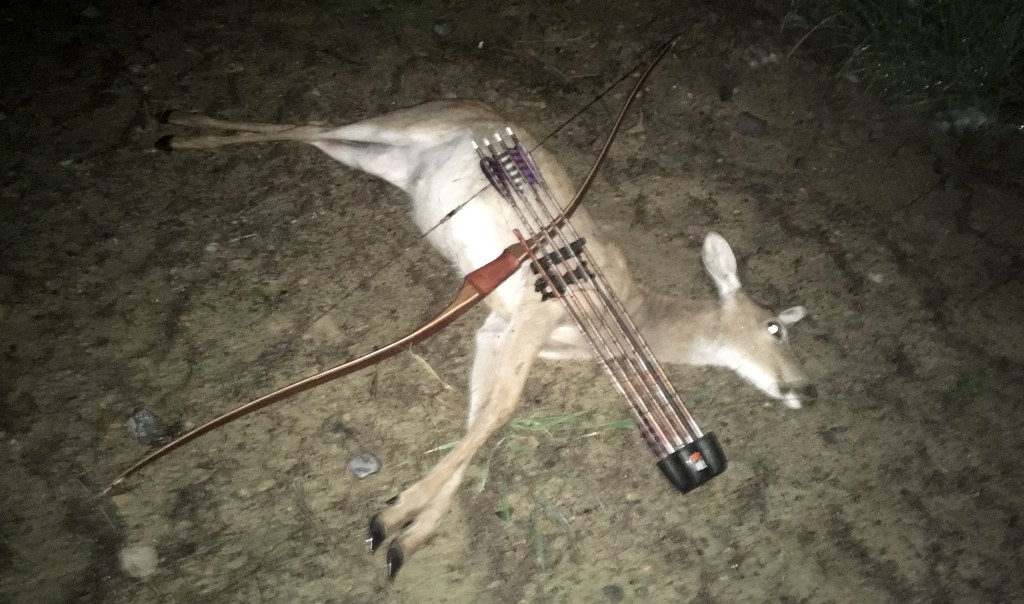Bow hunting has been on a slow march towards it own obsolescence. The Garmin Xero bow sight is the best example yet of this trend, both in archery hunting and hunting generally.
The debate over this product has been heated, though not vociferous, and like any particular item the particulars are less important than their place in the overall trend. Hunting bows have been getting better in the last decade, developments in the same trend line of laser range finders, mechanical releases, compound bows, and bow sights of any kind. Few would seriously assert that hunting with a bow is anything but easier than it was a quarter century ago. Similar things can be said of hunting rifles, where amongst the dedicated the formerly long (or longish) 300 yard shot is commonplace, and shots twice that far are not uncommon. Skilled, obsessed bowhunters (who like with firearms represent a very small percentage) can shoot with hunting-grade accuracy out to 80 yards, or more.
It is worth talking about both how this has happened, along with when and why it makes a difference. Technology drives changes in mindset, which writ large creates paradigm shifts. Today it is routine for newb sport climbers to lead 5.9 within a few weeks or months on the rock. The same grade, when Royal Robbines first climbed and used it in 1952, was at the top of the difficulty scale. Climbers today aren’t more talented than Royal Robbins, who (insofar as the question is even coherent) may have been an Adam Ondra level talent. Climbers today are playing a different game, and trying to separate the technological side of this from the mental side is an exercise in futility. That outliers, such as the 5.10 grade routes climbed in England and Germany as early as the first world war, are only recognizable as such in retrospect proves the rule. If their contemporaries could not recognize these feats as so different, it was because they did not have the tools to do so.
There is a lot to be said that people see something to be as difficult it is precisely because they are told so. When hunters are told that they can shoot deer at 50 yards, those interested enough to be paying attention often find out that they themselves can do exactly that.
As I found out in the past two year, when I started putting serious time into hunting deer, elk, and pronghorn on the ground with a longbow, not all 10 yard progressions are in hunting created equal. Different animals, in different circumstances, have different comfort thresholds. I’ve been able to get within 80 yards of many, many animals, and within 35 or so of a significant percentage of those, but closing down to the 20-25 I want for my stickbow decreased the odds of success enormously. If things like faster, flatter shooting bows, or a sight like the Xero which makes aiming far out faster and easier, it seems probable that more bowhunters will experience greater odds of success.
In the western US, this is relevant. Most states do not really count bowhunting mortality into their management plans, at least not relative to rifle hunters, and thus these hikers with sharp sticks get longer seasons, more tags in a given area, and often more favorable times of year (elk in the rut, or deer when they are still in velvet). At some point bowhunting success will grow such that bow seasons will become more like rifle seasons. After all, success breeds success, and more people will probably start bowhunting if it becomes easier. If these two tipping points happen close together, as I think they will, things in the bowhunting world may change, suddenly. Might rifle hunting follow eventually?
In the eastern US, the opposite may happen. Many states in the south and east have a hard time killing as many whitetail deer as they would like during hunting season, with some allowing a doe or more each day, every day on a months long season. Habitat alteration, and private land which congregates deer away from heavily hunted areas, have put some areas of the US on the verge of making market hunting for wildlife legal for the first time in over a century. With rifles not especially safe to use amongst dense human populations, more deadly and user-friendly bows are an attractive development.
Ethically both of these situations create a problem. Hunters should obey the categorical imperative, both when it comes to avoiding excessive suffering by making a clean kill, and by playing their role in population management, which prevents especially drastic winter kills and outbreaks of disease. Bow hunting generally is questionable in light of the former, while situationally it might be all but essential in light of the later.
Our town gives out region-specific mule deer doe permits, one per hunter for as many people as are interested, in order to knock back the urban and suburban population. I did my part this past fall, shooting a fawn with a .44 magnum after failing to get within range (and hardly seeing any) during bow season. That wasn’t enough, and the police have trapped and “disposed of” a couple hundred more deer this winter. Which is the better fate? And what do we want hunting to be, in America?

Leave a comment